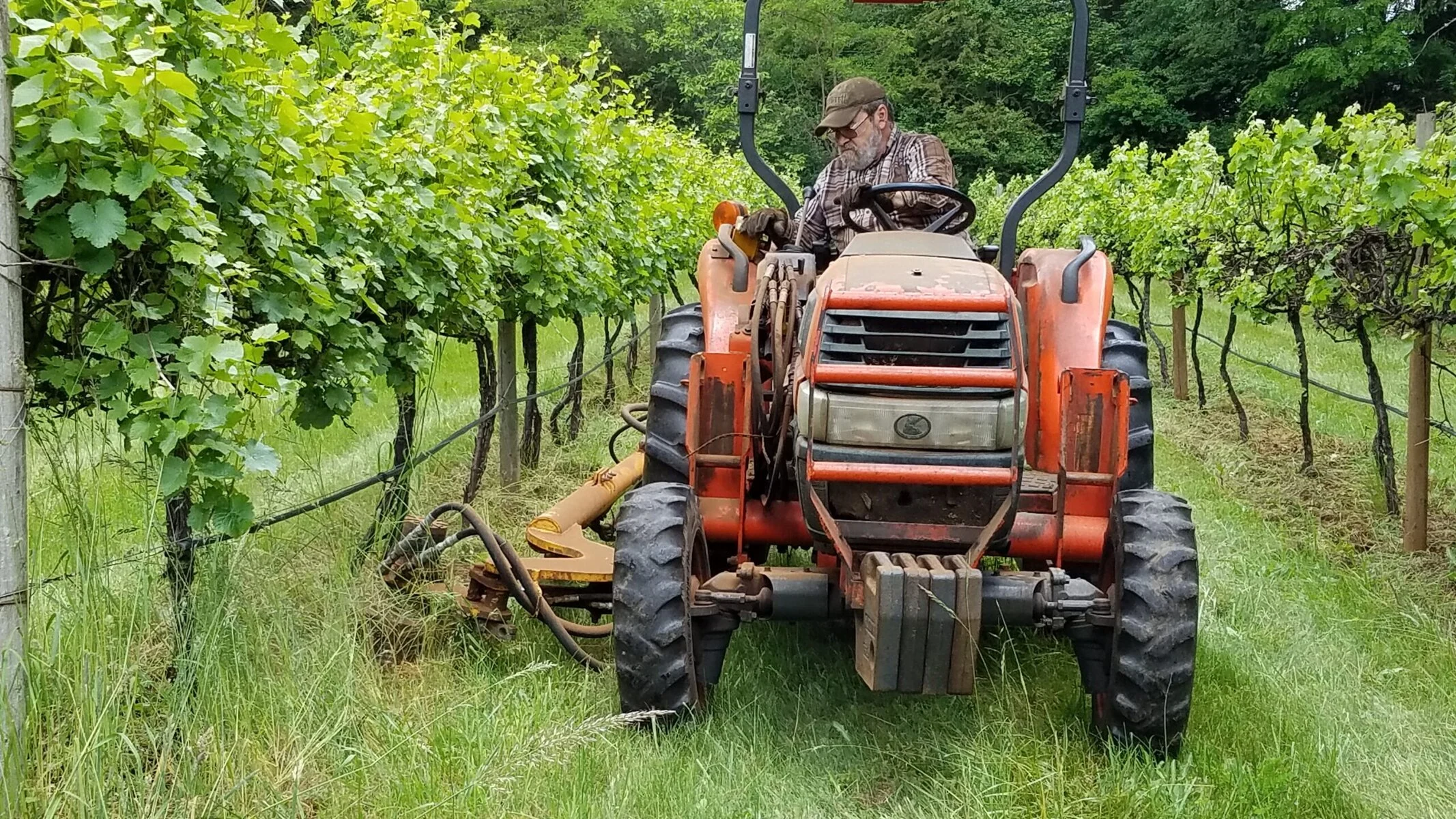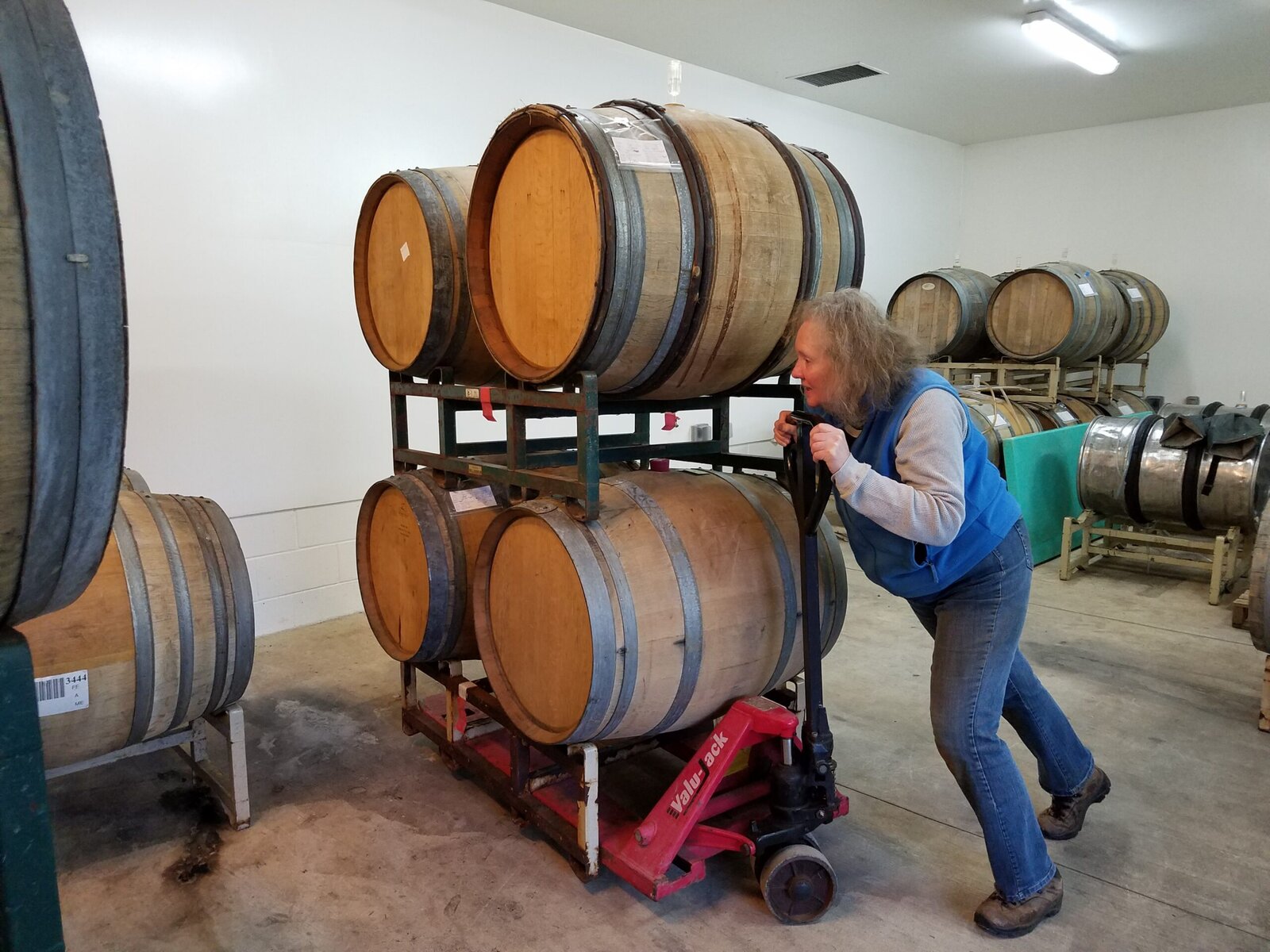Jan Wallinder and Ron Webb are the farmer-owners of Forest Edge Vineyard, an organically farmed vineyard 24 miles southeast of Portland that also has a fruit orchard and adjacent 22-acre forest. The couple, who have owned this land since 1984, are in their mid-70s and have no children. Yet they are passionate about making sure that their 45-acre property is used as farmland and forest in the future.
“It’s our belief that we have a relationship to the land and what it gives us,” explains Wallinder, 74. “And we need to preserve nature because it’s going away.” It’s also important to the couple, who farm organically and practice permaculture, that the next generation who buys their land value these practices.
Several years ago, the couple started investigating land trusts that could help them protect their land as farmland in perpetuity. (A land trust is an organization — usually a nonprofit but sometimes a government agency — that works to permanently conserve land.) “We didn’t find one that met our needs,” Wallinder says. Wallinder and Webb wanted to keep their property as a working farm and working forest — which would mean some change to the landscape. “We do intend to cut timber, because that’s what you do when you manage a forest,” she says. “I think most land trusts are more interested in protecting the land as it is.”
Eventually, they met Nellie McAdams, who was on the verge of launching the Oregon Agricultural Trust, which would focus on “working land conservation easements.” This type of easement protects the land in perpetuity for conservation as well as for active farming and forestry uses.
Forest Edge is just one of five properties that Oregon Agricultural Trust (OAT) has helped conserve using this type of easement. A conservation easement is a voluntary real estate contract through which a landowner cedes development rights on a property to an organization that will ensure that no one uses those rights in the future. (For example, the land could not be sold to the highest bidder to create a resort, luxury home or shopping mall.)
Founded in 2019, OAT negotiates working land conservation easements with farmers and ranchers, helps them access financial benefits in exchange and makes sure that current and future landowners follow the easements’ conservation requirements. McAdams, who is the executive director, is also a fifth-generation Oregon farmer, so she has insight into the financial and societal challenges farmers are facing. She’s clearly meeting a big need in the state. “We have gotten more demand than we know what to do with,” she says.
The nonprofit also offers Oregon farmers and ranchers resources such as trainings on estate and succession planning, educational webinars, and a seven-part “Stories from the Field” video series. It also has an advocacy program, which champions local, state and federal funding for working lands protection.
Weighed down by negative news?
Our smart, bright, weekly newsletter is the uplift you’ve been looking for.
Conservation easements come in many shapes and sizes. Some protect wildlife habitat. Others protect open space. But the one that OAT uses most often is this working land conservation easement. As with other types of conservation easements, this type allows the landowner to sell off development rights that they don’t need. In exchange for giving up these property rights — rights that artificially increase the property price above agricultural value — landowners can receive tax deductions and cash benefits. The tax deductions can be applied to their adjusted gross income over 16 years. The cash benefits usually come from the Natural Resources Conservation Service or the Oregon Agricultural Heritage Program.

The main difference with a working land conservation easement is that it allows agricultural or forestry production on the land as one of the conservation values. But perhaps more importantly to the farm owners — and to OAT — the land becomes more affordable for the next generation of farmers or ranchers. Right now, the average age of farmers and ranchers in Oregon is 60, and a full 80 percent of them don’t have succession plans. And that’s not because younger farmers don’t exist — they do. They just can’t afford the land, in most cases. Farmland prices around the state have skyrocketed in recent years. In Hood River Valley, for example, land has sold for as much as $40,000 an acre — usually to developers building vacation homes. Few young farmers or ranchers have the resources to compete for this agriculturally rich land.
This is true across the country. Nationally, over 40 percent of farmland is owned by people who are 65 or older. And fertile land that was once used for farming or ranching has been snapped up by well-heeled developers from coast to coast. According to the nonprofit American Farmland Trust (AFT), 11 million acres of U.S. farmland and ranchland were converted to urban or residential land use between 2001 and 2016. That’s 2,000 acres a day. If these trends continue, the U.S. will convert 18.4 million additional acres of agricultural land to more developed uses by 2040.
Americans farms and ranches are a critical source of food at a time when the global food chains are vulnerable to factors beyond our control. In recent years, climate change (including droughts and fires), a global pandemic and regional wars are just a few of the forces that have driven food prices higher or made certain ingredients hard to come by. The current president’s goal of placing high tariffs on imports from neighboring countries further underlines the need to protect America’s farms and ranchland.
Luckily, the movement to do so is growing. When AFT was founded in 1980, it was the first nationwide land trust devoted to agricultural land protection. Now, there are more than 600 land trusts around the nation with the goal of saving agricultural land. And according to Jennifer Dempsey, American Farmland Trust’s Farmland Information Center director and senior advisor, this is very much a bipartisan issue. “There is bipartisan support for agricultural land protection,” she says. She points to the consistent support in West Virginia for the Voluntary Farmland Protection Act, which passed unanimously 25 years ago, with a Democratic governor and a Republican legislature. There also continues to be bipartisan support for the Agricultural Lands Easement component of the Agricultural Conservation Easement Program, a USDA initiative that helps landowners, land trusts and other entities protect, restore and enhance wetlands or protect working farms and ranches through conservation easements.
One of the landowners OAT has worked with in its first five years is Elanor O’Brien of Persephone Farm, a 54-acre organic vegetable farm located on a beautiful stretch of the South Santiam River about 45 miles southeast of Salem. O’Brien’s working land conservation easement includes provisions that protect the riparian area along the river and grant members of all federally recognized tribes — including the Confederated Tribes of Grand Ronde — access to the land for ceremony and harvest. She eventually hopes to sell the land to a younger farmer. OAT has also created working land conservation easements for a 27,000-acre active ranch with sage grouse habitat in Malheur and Baker counties in southeastern Oregon; a 902-acre pasture for cattle and waterfowl habitat in the south central high desert (which has already sold to a beginning rancher, who was able to afford it because of the easement); and a 2,544-acre cattle ranch also in the central high desert.

OAT raises funds for its work mainly through foundation and government grants and individual donors, and sometimes through donations of land. Partly in an effort to counteract the Trump administration’s recent mass cancellation of grants, OAT has launched a new campaign called Donate-Protect-Transfer, which encourages landowners to donate agricultural land to OAT, which the trust then protects with an easement.
“There are a lot of folks who are interested in donating their land because they care so much about it,” McAdams says. “We want to be part of that solution. We can leverage it three different ways: By helping with the transfer, by giving them a tax break, and by using the proceeds to protect more properties.” It’s a win-win-win.
Wallinder and Webb of Forest Edge Winery decided against the cash benefits and tax deduction. (To receive a charitable tax deduction for any portion of the easement value, the landowner must pay for their own appraisal, and the cost of the appraisal would’ve been higher than the tax deduction in this case, says McAdams.) But they’re so relieved to have finally put their property into an easement.
“Finally doing this lifted that anxiety from us,” says Wallinder. “What if something happened to us and we hadn’t protected the land?”
The post How Farmers in Oregon Are Preserving Their Land for the Next Generation appeared first on Reasons to be Cheerful.




